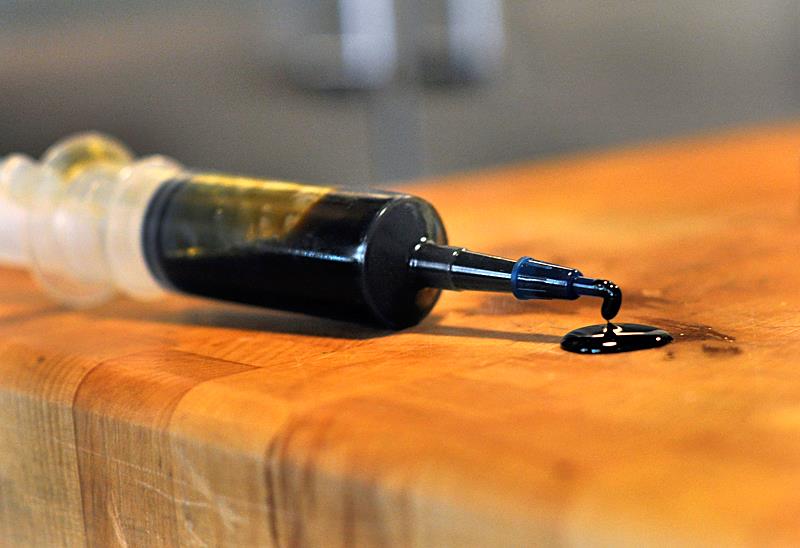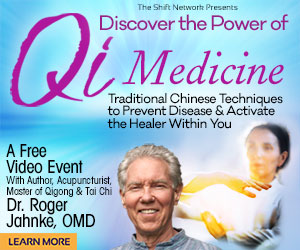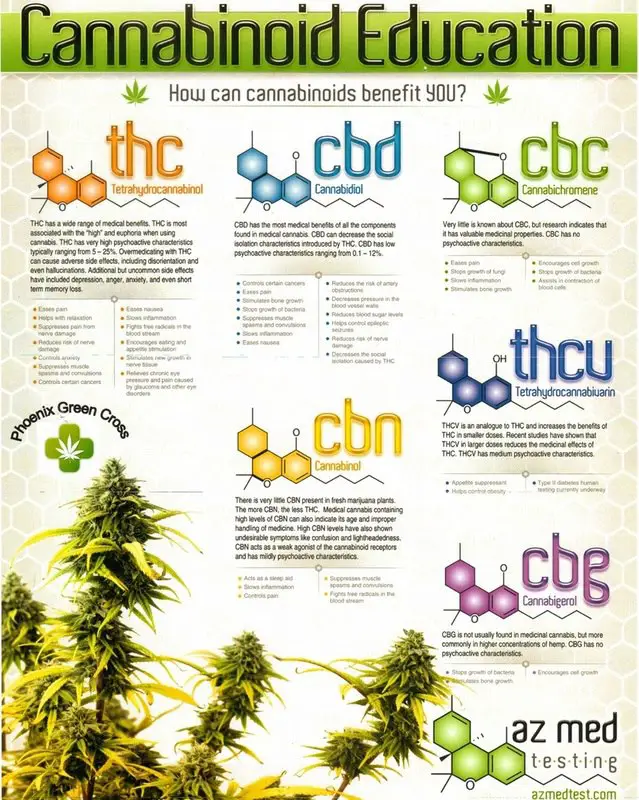Contributing writer for Wake Up World
Although I’ve been aware of the recent positive discussion of cannabis oil as a treatment for various serious diseases, I was still skeptical to consider this as a viable solution for certain health disorders. After all, so many people these days are looking for the perfect miracle pill to solve their health issues! Is this another panacea? Is this another way of buying into the mentality of one-size-fits-all treatments that come in a bottle without making any necessary dietary and life style changes?
In the end, it all depends on how we really make use of these extracts that nature provided us and how clearly we see the “big picture” of true healing.
So it was time I found out more! I interviewed one of my colleagues with extensive knowledge on the matter – Steven Sinay, VP of Nutritional Science for Empower Genetics and a fellow Metabolic Typing practitioner. This article is what he kindly shared with me on the very interesting topic of cannabis oil.
Understanding Cannabis Oil
Raluca Schachter: What is cannabis oil and how does it work?
Steven Sinay: Cannabis Oil is a thick, sticky, resinous substance that is extracted from the cannabis plant (Cannabis sativa or Cannabis indica). Cannabis oil is a base product that is prepared by separating the resins from the cannabis flowers (buds) using a solvent extraction process. Cannabis oil contains several Cannabinoids including Tetrahydrocannabinol (THC), the psychoactive component, and Cannabidiol (CBD), the medicinal component of cannabis.
For legal purposes becoming more commonly used over Cannabis oil, is Hemp oil which is being grown in Europe to have higher levels of CBD and with no THC. In 2001, the DEA issued a rule banning all import and cultivation of industrial grade hemp. In 2003, the Hemp Industries Association filed an Urgent Motion for Stay in the Ninth Circuit Court of Appeals. In 2004, the Ninth Circuit Court sided with the Hemp Industries Association.
In the decision, Judge Betty Fletcher wrote, “[T]hey (DEA) cannot regulate naturally occurring THC not contained within or derived from marijuana-i.e., non-psychoactive hemp is not included in Schedule I. The DEA has no authority to regulate drugs that are not scheduled, and it has not followed procedures required to schedule a substance. The DEA’s definition of “THC” contravenes the unambiguously expressed intent of Congress in the Controlled Substances Act (CSA) and cannot be upheld.”
Judge Fletcher is essentially saying that the DEA cannot regulate hemp or the chemicals within it because hemp contains no THC, is not marijuana, and is therefore not covered under the controlled substances act; and the DEA cannot regulate substances that have not been scheduled. This is why you can purchase and sell CBD hemp oil.
Over the last 20 years Cannabis has been at the center of one of the most exciting and underreported developments in recent modern science. Research on marijuana’s effects led directly to the discovery of an unknown biochemical communication system in the human body, the Endocannabinoid System, which plays a crucial role in regulating our physiology, mood, and everyday experience.
The discovery of receptors in the brain that respond pharmacologically to Cannabis and the subsequent identification of endogenous cannabinoid compounds in our own bodies that bind to these receptors has significantly advanced our understanding of human biology, health, and disease.
It is an established scientific fact that cannabinoids and other components of cannabis can modulate many physiological systems in the human brain and body. Cannabinoids are chemical compounds that trigger cannabinoid and other receptors. More than 100 cannabinoids have been identified in the marijuana plant. Of these, THC and CBD have been studied most extensively. In addition to cannabinoids produced by the plant, there are endogenous cannabinoids (anandamide and 2AG) that occur naturally in the body, as well as synthetic cannabinoids created by pharmaceutical researchers.
Cannabinoids promote homeostasis at every level of biological life, from the sub-cellular, to the organism, and perhaps to the community and beyond. Here’s one example: autophagy, a process in which a cell sequesters part of its contents to be self-digested and recycled, is mediated by the cannabinoid system. While this process keeps normal cells alive, allowing them to maintain a balance between the synthesis, degradation, and subsequent recycling of cellular products, it has a deadly effect on malignant tumor cells, causing them to consume themselves in a programmed cellular suicide. The death of cancer cells, of course, promotes homeostasis and survival at the level of the entire organism.
Scientists associated with the International Cannabinoid Research Society (ICRS) have elucidated a number of molecular pathways whereby CBD exerts a therapeutic impact. A preclinical study by Dr. Sean McAllister and his colleagues at the California Pacific Medical Center in San Francisco reports on how CBD kills breast cancer by down regulating a gene called ID-1, which is implicated in several types of aggressive cancer. Silencing the ID-1 gene is thus is an excellent strategy for a cancer treatment.
Extensive preclinical research much of it sponsored by the U.S. Government (see U.S. Patent below) indicates that CBD has potent anti-tumoral, antioxidant, anti-spasmodic, anti-psychotic, anti-convulsive, and neuroprotective properties. CBD directly activates serotonin receptors, causing an anti-depressant effect, as well.
The United States Government holds U.S. Patent 6,630,507 (filed 1999) on Cannabinoids stating in their patent: “Cannabinoids have been found to have antioxidant properties, unrelated to NMDA receptor antagonism. This new found property makes cannabinoids useful in the treatment and prophylaxis of wide variety of oxidation associated diseases, such as ischemic, age-related, inflammatory and autoimmune diseases. The cannabinoids are found to have particular application as neuroprotectants, for example in limiting neurological damage following ischemic insults, such as stroke and trauma, or in the treatment of neurodegenerative diseases, such as Alzheimer’s disease, Parkinson’s disease and HIV dementia. Nonpsychoactive cannabinoids, such as cannabidiol, are particularly advantageous to use because they avoid toxicity that is encountered with psychoactive cannabinoids at high doses useful in the method of the present invention.”
Raluca Schachter: Under what conditions has cannabis oil proved to be most successful?
Steven Sinay: According to many CBD Researchers the following are a list of conditions that the use of CBD has been shown to improve: Acne, ADD/ADHD, Addiction, AIDS, ALS, Alzheimer’s Disease, Anorexia, Antibiotic Resistance, Anxiety, Atherosclerosis, Arthritis, Asthma, Autism Spectrum Disorder, Bipolar Disorder, Cancer, Colitis/Crohn’s, Depression, Diabetes, Endocrine Disorders, Epilepsy/Seizure, Fibromyalgia, Glaucoma, Heart Disease, Huntington’s Disease, Inflammatory Disorders, Irritable Bowel Syndrome, Kidney Disease, Liver Disease, Metabolic Syndrome, Migraines, Mood Disorders, Motion Sickness, Multiple Sclerosis, Nausea, Neurodegeneration, Neuropathic Pain, Obesity, OCD, Osteoporosis, Parkinson’s Disease, Prion/Mad Cow Disease, PTSD, Rheumatism, Schizophrenia, Sickle Cell Anemia, Skin Conditions, Sleep Disorders, Spinal Cord Injury, and Stress Stroke/TBI.
Raluca Schachter: What should we look out for, in terms of the quality of cannabis oil?
Steven Sinay: Since cannabis oil products have only been in the market place for a short period of time, it is important to source these products just as you would your produce, meat, fish, etc. As far as I can tell there are not a lot of regulatory organizations monitoring the quality and purity of these sources. Be sure to look for a product that has gone through some sort of third party lab testing that detect contaminants like pesticides, fungicides, mycotoxins, microbes, etc. Equally as important consumers need to be aware of the concentration of their medicinal cannabis.
It is fundamental in allowing the consumer to choose the correct medicine for their symptoms, as well as determining the proper dose. It’s good practice to find a manufacturer that is not afraid to allow access to each Certificate of Analysis on every batch they produce. Here in the United States a non THC CBD product is classified as a dietary supplement and is legal in all 50 states.
Raluca Schachter: The nutritional world is quite flooded with hypes these days. But as we know through Metabolic Typing ®, there is no nutrient, remedy or food that can be beneficial for everybody. Any nutrient has different effects in different metabolisms, biochemically speaking. So there are no one size fits all remedies, really. From your experience, have you had the chance to observe how this remedy had different effects in different metabolisms?
Steven Sinay: As previously mentioned, at the right dosage, CBD has been shown to significantly help with anxiety, pain, neurodegeneration, inflammation, etc. An appropriately high dosage of CBD will give you all the desired effects you need, and there is really no risk of overdose as CBD is harmless even in high concentrations. However, most people will feel little effect if they take too low a dosage, effectively wasting CBD’s powerful beneficial properties.
With the above in mind, the importance of correct CBD dosage becomes obvious. People with different requirements and different metabolisms will need accordingly different CBD dosages to experience CBD’s positive effects, and dosages can vary dramatically because there is no one-size-fits-all “typical CBD dosage.” While there is no such thing as “too much CBD,” you can in fact take too little to feel a difference. Dosage can range anywhere from 2-3 mg, up to 100 mg, 200 mg, or 500 mg to 1000 mg on the super high end. Remember, you cannot overdose and there are no reported side effects from taking high concentrations of CBD. Most people only need around 2-3 mg per day to start feeling a difference. Yet people with stronger needs may need to start at a lower dose and work their way up until they find the right dose for their body.
Raluca Schachter: What are your thoughts regarding the future of cannabis in the medical field?
Steven Sinay: This is the $64,000 Dollar Question! With our government holding a patent on several Cannabinoids, it leads one to be a little skeptical. Why? The forces that would keep cannabis illegal are vocal and very well-funded, but they are not impervious to persistent effort. The lynch pin in the War on Drugs has always been cannabis. Without the suppression and interdiction of this popular and widely used substance, there simply would not be enough “illegal drug use” going on to justify the huge amount of money and resources spent on “fighting drugs.” Once again all based on the all mighty dollar!
I feel CBD and other Cannabinoids with the persistence from those who can, and are truly benefiting from its medicinal properties, along with natural healers promoting its use, will find its place in future modern medicine. Time will tell.
Recommended articles by Raluca Schachter:
- Vitamin D Supplementation: This is Why It Can Be Wrong
- Hypothyroidism or Hashimoto’s? What You Need to Know and Why It Matters
- Understanding Cannabis Oil
- 6 Steps to Solve Your Blood Sugar Problems Permanently
- Antibiotic Resistant Infections: The Dangers… and How You Can Avoid Them
- What Really Happens When You Take Antibiotics?
- Understanding Inflammation and How to Eliminate It Naturally
- Listen to Your Body. Correct Food Ratios. Reverse Disease.
- Cholesterol Myths Debunked
- Follow The Money In “Sick-Care”: What’s Behind The Drugs And Needles?
- What Happens In Your Body When You Suffer From Thyroid Disease?
About the author:
 Raluca Schachter is a dedicated Clinical Nutritionist / Natural Health Practitioner a.k.a “The Health Detective”. Raluca was able to naturally reverse chronic health conditions she was struggling with most of her life, and now uses her knowledge to help as many people as possible do the same. Her health programs and diet plans offer a very unique and comprehensive approach to health, where individual nutritional and biochemical requirements are firstly met using specific nutrients and foods that each metabolism thrives on. Raluca offers her services to international clientele and her practice is fully online based. You can connect with Raluca at www.metabolicenergy.net and https://www.facebook.com/raluca.schachter.metabolicenergy
Raluca Schachter is a dedicated Clinical Nutritionist / Natural Health Practitioner a.k.a “The Health Detective”. Raluca was able to naturally reverse chronic health conditions she was struggling with most of her life, and now uses her knowledge to help as many people as possible do the same. Her health programs and diet plans offer a very unique and comprehensive approach to health, where individual nutritional and biochemical requirements are firstly met using specific nutrients and foods that each metabolism thrives on. Raluca offers her services to international clientele and her practice is fully online based. You can connect with Raluca at www.metabolicenergy.net and https://www.facebook.com/raluca.schachter.metabolicenergy

If you've ever found value in our articles, we'd greatly appreciate your support by purchasing Mindful Meditation Techniques for Kids - A Practical Guide for Adults to Empower Kids with the Gift of Inner Peace and Resilience for Life.
In the spirit of mindfulness, we encourage you to choose the paperback version. Delve into its pages away from screen glare and notifications, allowing yourself to fully immerse in the transformative practices within. The physical book enriches the learning process and serves as a tangible commitment to mindfulness, easily shared among family and friends.
Over the past few years, Wake Up World has faced significant online censorship, impacting our financial ability to stay online. Instead of soliciting donations, we're exploring win-win solutions with our readers to remain financially viable. Moving into book publishing, we hope to secure ongoing funds to continue our mission. With over 8,500 articles published in the past 13 years, we are committed to keeping our content free and accessible to everyone, without resorting to a paywall.









